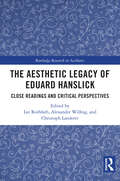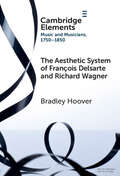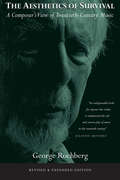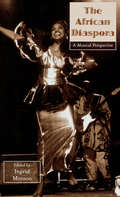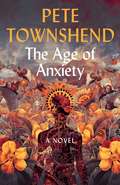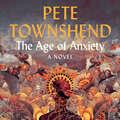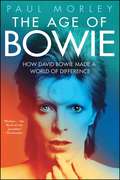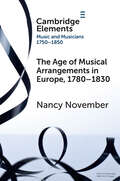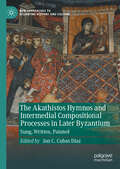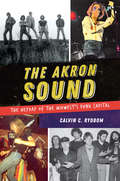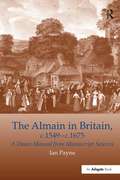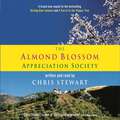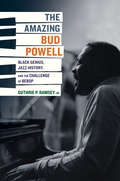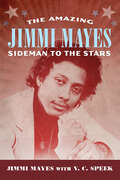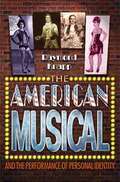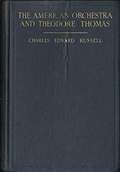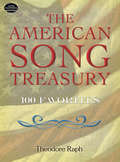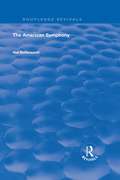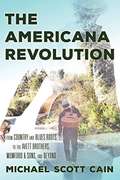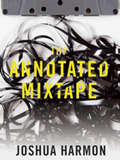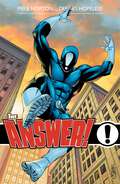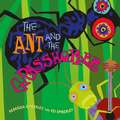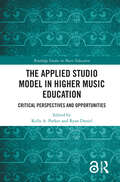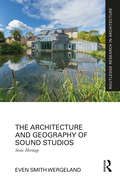- Table View
- List View
The Aesthetic Legacy of Eduard Hanslick: Close Readings and Critical Perspectives (Routledge Research in Aesthetics)
by Lee Rothfarb, Alexander Wilfing, and Christoph LandererThis book addresses the complex conceptual, historical, and philosophical questions posed by Eduard Hanslick’s influential aesthetic treatise, On the Musically Beautiful (1854). The contributions reveal the philosophical foundations and subtleties of his aesthetic approach.The collection features original essays written by leading scholars in philosophical aesthetics and musicology. It covers many of Hanslick’s overarching themes, such as the relationship between beauty and form, between music and emotion, and the role of imagination and performance in music, which have recently gained prominence in Hanslick scholarship. The chapters, divided into five thematic sections, will provide a better scholarly foundation for a deeper understanding of On the Musically Beautiful and its arguments.In bringing together the various approaches and accounts of the different textual, historical, conceptual, and philosophical challenges posed by Hanslick’s aesthetics, The Aesthetic Legacy of Eduard Hanslick will appeal to philosophers of music, historians of aesthetics, musicologists specializing in 19th-century studies, and music theorists working on aesthetic issues.
The Aesthetic System of François Delsarte and Richard Wagner: Catholicism, Romanticism, and Ancient Music (Elements in Music and Musicians 1750-1850)
by Bradley HooverOn 17 September 1839, Richard Wagner arrived in Paris. Although scholars agree that the composer learned a great deal about aesthetics during his first sojourn in the city, what has not been known is exactly what he learned and from whom. This Element explores the striking similarities between Wagner's early aesthetic writings and François Delsarte's 'Cours d'esthétique appliquée', a theoretical and practical training course for artists which Delsarte began teaching in Paris in May 1839. This Element also details the rise of Delsarte as a celebrated teacher of aesthetics and interpreter of Gluck's repertoire during the same years that Wagner lived in the city. By comparing historical timelines, published documents, and manuscript sources and by analysing Wagner's treatises, Das Kunstwerk der Zukunft and Oper und Drama, and the essay 'Über Schauspieler und Sänger', the author shows that Delsarte's course is the most likely source of Wagner's aesthetic transformation in Paris.
The Aesthetics of Survival
by George RochbergA revised paperback edition of composer George Rochberg's landmark essays
The African Diaspora: A Musical Perspective (Critical and Cultural Musicology)
by Ingrid MonsonThe African Diaspora presents musical case studies from various regions of the African diaspora, including Africa, the Caribbean, Latin America, North America, and Europe, that engage with broader interdisciplinary discussions about race, gender, politics, nationalism, and music. Featured here are jazz, wassoulou music, and popular and traditional musics of the Caribbean and Africa, framed with attention to the reciprocal relationships of the local and the global.
The Age of Anxiety: A Novel - The Times Bestseller
by Pete TownshendThe Age of Anxiety is a great rock novel, but that is one of the less important things about it. The narrator is a brilliant creation - cultured, witty and unreliable. The novel captures the craziness of the music business and displays Pete Townshend's sly sense of humour and sharp ear for dialogue. First conceived as an opera, The Age of Anxiety deals with mythic and operatic themes including a maze, divine madness and long-lost children. Hallucinations and soundscapes haunt this novel, which on one level is an extended meditation on manic genius and the dark art of creativity.
The Age of Anxiety: A Novel - The Times Bestseller
by Pete TownshendThe debut novel by Pete Townshend, one of the world's greatest rock stars.The Age of Anxiety is a great rock novel, but that is one of the less important things about it. The narrator is a brilliant creation - cultured, witty and unreliable. The novel captures the craziness of the music business and displays Pete Townshend's sly sense of humour and sharp ear for dialogue. First conceived as an opera, The Age of Anxiety deals with mythic and operatic themes including a maze, divine madness and long-lost children. Hallucinations and soundscapes haunt this novel, which on one level is an extended meditation on manic genius and the dark art of creativity.(P)2019 Hodder & Stoughton Limited
The Age of Bowie: How David Bowie Made A World Of Difference
by Paul MorleyAuthor and industry insider Paul Morley explores the musical and cultural legacies left behind by "The Man Who Fell to Earth."Respected arts commentator and author Paul Morley, an artistic advisor to the curators of the highly successful retrospective exhibition David Bowie is for the Victoria & Albert Museum in London, constructs a definitive story of Bowie that explores how he worked, played, aged, structured his ideas, influenced others, invented the future, and entered history as someone who could and would never be forgotten. Morley captures the greatest moments from across Bowie's life and career; how young Davie Jones of South London became the international David Bowie; his pioneering collaborations in the recording studio with the likes of Tony Visconti, Mick Ronson, and Brian Eno; to iconic live, film, theatre, and television performances from the 1970s, 80s, and 90s, as well as the various encounters and artistic relationships he developed with musicians from John Lennon, Lou Reed, and Iggy Pop to Trent Reznor and Arcade Fire. And of course, discusses in detail his much-heralded and critically acclaimed finale with the release of Blackstar just days before his shocking death in New York. Morley offers a startling biographical critique of David Bowie's legacy, showing how he never stayed still even when he withdrew from the spotlight, how he always knew his own worth, and released a dazzling plethora of personalities, concepts, and works into the world with a single-minded determination and a voluptuous imagination to create something the likes of which the world had never seen before--and likely will never see again.
The Age of Musical Arrangements in Europe: 1780–1830 (Elements in Music and Musicians 1750–1850)
by Nancy NovemberThis Element considers the art and culture of arranging music in Europe in the period 1780–1830, using Haydn's London symphonies and Mozart's operas as its principal examples. The degree to which musical arrangements shaped the social, musical, and ideological landscape in this era deserves further attention. This Element focuses on Vienna, and an important era in the culture of arrangements in which they were widely and variously cultivated, and in which canon formation and the conception of musical works underwent crucial development. Piano transcriptions (for two hands, four hands, and two pianos) became ever more prominent, completely taking over the field after 1850. For various reasons, principal composers of the era under consideration, including Haydn, Mozart, and Beethoven, participated directly in the practice of arrangement. Motivations to produce arrangements included learning the art of composition, getting one's name known more widely, financial gain, and pedagogical aims.
The Agony of Modern Music
by Henry PleasantsMUSIC The Argument Modern music is not modern and is rarely music. # It represents an attempt to perpetuate a European musical tradition whose technical resources are exhausted, and which no longer has any cultural validity. # That it continues to be composed, performed, and discussed represents self-deception by an element of society which refuses to believe that this is true. # The hopelessness of the situation is technically demonstrable, and contemporary composers are aware of it. # What makes their own situation hopeless is that they cannot break with the tradition without renouncing the special status they enjoy as serious composers. # That they have this status is the result of a popular superstition that serious music is by definition superior to popular music. # There is good music, indifferent music and bad music, and they all exist in all types of composition. # There is more real creative musical talent in the music of Armstrong and Ellington, in the songs of Gershwin, Rodgers, Kern and Berlin, than in all the serious music composed since 1920. # New music which cannot excite the enthusiastic participation of the lay listener has no claim to his sympathy and indulgence. Contrary to popular belief, all the music which survives in the standard repertoire has met this condition in its own time. # The evolution of Western music continues in American popular music, which has found the way back to the basic musical elements of melody and rhythm, exploited in an original manner congenial to the society of which it is the spontaneous musical expression. # And it has found the way back to the basic musical nature of the ordinary mortal, from whom music derives, by whom and for whom it is produced, and without whom it cannot and does not exist.
The Akathistos Hymnos and Intermedial Compositional Processes in Later Byzantium: Sung, Written, Painted (New Approaches to Byzantine History and Culture)
by Jon C. Cubas DíazThis book explores intermedial compositional processes in later Byzantium, building on the Akathistos Hymnos. The relationship between the hymn’s text, music, and illustrations has yet to be explored in detail. The contributions here argue that these painted cycles should be studied as a result of interaction between hymnography, psalmody, and visual art, not just as mere illustration of text. Highlighting illuminated and notated manuscript copies of the hymn as evidence for varied liturgical and devotional practices, they examine how icons and murals based on the Akathistos functioned as constituent elements of sacred space. Focusing on intermediality, this book helps bridge methodological gaps between scholarly approaches to medieval culture.
The Akron Sound: The Heyday of the Midwest's Punk Capital
by Calvin C. RydbomMusic made in Akron symbolized an attitude more so than a singular sound. Crafted by kids hell-bent on not following their parents into the rubber plants, the music was an intentional antithesis of Top 40 radio. Call it punk or call it new wave, but in a short few years, major labels signed Chrissie Hynde, Devo, the Waitresses, Tin Huey, the Bizarros, the Rubber City Rebels and Rachel Sweet. They had their own bars, the Crypt and the Bank. They had their own label, Clone Records. They even had their own recording space, Bushflow Studios. London's Stiff Records released an Akron compilation album, and suddenly there were "Akron Nights" in London clubs and CBGB was waiving covers for people with Akron IDs. Author Calvin Rydbom of the "Akron Sound" Museum remembers that short time when the Rubber City was the place.
The Almain in Britain, c.1549-c.1675: A Dance Manual from Manuscript Sources
by Ian PayneThis complete scholarly edition of the collection of manuscript choreographies from c.1565-c.1675 associated with the Inns of Court is the first full-length study of these sources to be published. It offers practical reconstructions of the dances and provides a selection of musical settings simply but idiomatically arranged for four-part instrumental ensemble or keyboard. � Part One centres on the manuscript sources which transmit the Almain, and on the trends and influences that shaped its evolution in Britain from c. 1549 to c. 1675, taking account of both music and choreography.� In viewing the Almain within its broader historical context, Ian Payne throws new light on the dance, arguing that, together with the �measures� which accompany it in the choreographies, it owes an even greater debt to the English country dance than has hitherto been acknowledged, a popular style that received its fullest expression in Playford's English Dancing Master of 1651. � The second part of the book focuses on the dances themselves. The steps are described in detail and reconstructions provided for the nine Almains and some of the other measures included in the manuscripts. Part Three comprises a complete critical edition of the manuscripts. � These easily performable versions of the dances will be an invaluable aid to those wishing to learn the dances, reconstruct them for stagings of Shakespeare's plays or Jacobean masques, and for dance historians.
The Almond Blossom Appreciation Society
by Chris StewartThe good life abroad just keeps getting better as Christ Stewart, one-time Genesis drummer, turned sheepshearer, trned bestselling writer, returns with a new book on his life in the decidedly oddball region of Las Alpujarras, south of Granada.THE ALOMOND BLOSSOM APPRECIATION SOCIETY finds Chris and his family still living on their farm, El Varo - but life there never stands still. You will find yourself laughing out loud as Chris is instructed by his daughter on the way to treat dung beetles; bluffs his way as an art history guide to millionaire Bostonians; collects seeds in North Africa; and joins an Almond Blossom Appreciation Society. And you'll cringe as he tries his hand at office work in an immigrants' advice centre in Granada...In this sequel to DRIVING OVER LEMONS and A PARROT IN A PEPPER TREE, Chris Stewart's optimism and zest for life is as infectious as ever.Read by Chris Stewart(p) 2006 Orion Publishing Group
The Amazing Bud Powell
by Guthrie P. Ramsey Jr.Bud Powell was not only one of the greatest bebop pianists of all time, he stands as one of the twentieth century's most dynamic and fiercely adventurous musical minds. His expansive musicianship, riveting performances, and inventive compositions expanded the bebop idiom and pushed jazz musicians of all stripes to higher standards of performance. Yet Powell remains one of American music's most misunderstood figures, and the story of his exceptional talent is often overshadowed by his history of alcohol abuse, mental instability, and brutalization at the hands of white authorities. In this first extended study of the social significance of Powell's place in the American musical landscape, Guthrie P. Ramsey, Jr. shows how the pianist expanded his own artistic horizons and moved his chosen idiom into new realms. Illuminating and multi-layered, The Amazing Bud Powell centralizes Powell's contributions as it details the collision of two vibrant political economies: the discourses of art and the practice of blackness.
The Amazing Jimmi Mayes: Sideman to the Stars (American Made Music Series)
by Jimmi MayesAssociation of Recorded Sound Collections Awards for ExcellenceBest Research in Recorded Blues, Hip-Hop, Rhythm & Blues – Certificate of Merit (2014)For more than fifty years, Chicago drummer Jimmi Mayes served as a sideman behind some of the greatest musicians and musical groups in history. He began his career playing the blues in the juke joints of Mississippi, sharpened his trade under the mentorship of drum legends Sam Lay and Fred Below in the steamy nightclubs of south Chicago, and hit it big in New York City behind such music legends as Tommy Hunt from the Flamingos, Marvin Gaye, and James Brown.Mayes played his drums behind blues giants Little Walter Jacobs, Jimmy Reed, Robert Junior Lockwood, Earl Hooker, Junior Wells, Pinetop Perkins, and Willie "Big Eyes" Smith. He lived for a while with Motown sensation Martha Reeves and her family and traveled with the Shirelles and the Motown Review. Jimi Hendrix was one of Mayes's best friends, and they traveled together with Joey Dee and the Starliters in the mid-1960s.Mayes lived through racial segregation, the civil rights movement of the 1960s, the integration of rock bands, and the emergence of Motown. He personally experienced the sexual and moral revolutions of the sixties, was robbed of his musical royalties, and survived a musical drought. He's been a pimp and a drug pusher--and lived to tell the tale when so many musicians have not. This sideman to the stars witnessed music history from the best seat in the house--behind the drum set.
The American Musical and the Performance of Personal Identity: And the Performance of Personal Identity
by Raymond KnappThe American musical has long provided an important vehicle through which writers, performers, and audiences reimagine who they are and how they might best interact with the world around them. Musicals are especially good at this because they provide not only an opportunity for us to enact dramatic versions of alternative identities, but also the material for performing such alternatives in the real world, through songs and the characters and attitudes those songs project. This book addresses a variety of specific themes in musicals that serve this general function: fairy tale and fantasy, idealism and inspiration, gender and sexuality, and relationships, among others. It also considers three overlapping genres that are central, in quite different ways, to the projection of personal identity: operetta, movie musicals, and operatic musicals. Among the musicals discussed are Camelot, Candide; Chicago; Company; Evita; Gypsy; Into the Woods; Kiss Me, Kate; A Little Night Music; Man of La Mancha; Meet Me in St. Louis; The Merry Widow; Moulin Rouge; My Fair Lady; Passion; The Rocky Horror Picture Show; Singin' in the Rain; Stormy Weather; Sweeney Todd; and The Wizard of Oz. Complementing the author's earlier work, The American Musical and the Formation of National Identity, this book completes a two-volume thematic history of the genre, designed for general audiences and specialists alike.
The American Orchestra and Theodore Thomas
by Charles Edward RussellThe history of the American orchestra.<P><P> Pulitzer Prize Winner
The American Song Treasury: 100 Favorites
by Theodore Raph". . . besides innumerable good old tunes running in our heads, [there's] a sense of having actually lived in the years [covered by] this book." -- The International MusicianMusic has always played an important part in American life--from the hymns sung in colonial days, to partisan songs that supported independence, and war songs that boosted morale. Immigration, westward movement and industrialization all helped contribute to America's musical archives. This outstanding collection of 100 all-time favorite songs offers an unbeatable combination: the music and lyrics of well-known tunes in easy-to-sing keys, together with equally entertaining background information on each song. Assembled by noted composer, arranger and musical director Theodore Raph, this impressive volume spans 300 years--from the haunting strains of Greensleeves to songs that reached new peaks of popularity in the 1950s (He's Got the Whole World in His Hand).Perfect for party sing-alongs or for one's own enjoyment, these appealing songs all made past his parades. Yankee Doodle was "on the charts" during the Revolutionary War; Clementine and Sweet Betsy from Pike were widely hummed, sung, whistled and played in the mid-nineteenth century. She'll Be Comin' Round the Mountain and Wabash Cannonball heralded the era of transcontinental railroad construction; and regional songs such as My Old Kentucky Home, On the Banks of the Wabash, and Home on the Range became nationwide favorites.Easy-to-play piano accompaniments, guitar chords and complete lyrics make these familiar melodies ideal ice-breakers on picnics, boating excursions, camping trips and a host of other group activities. Because they're in the public domain, these tunes are also desirable for professional and commercial use. (No permission or royalty payments necessary!) Singers, pianists, students, teachers -- songsters at all levels of expertise -- will be delighted with these musical moments from bygone eras.
The American Symphony (Routledge Revivals)
by Neil ButterworthFirst published in 1998, this volume is the first book to focus on the American symphony. Neil Butterworth surveys the development of the symphony in the United States from early European influences in the last century to the present day, and asks why American composers have shown such allegiance to a musical form which their European contemporaries appear to have discarded. An overview of the growth of musical societies in America during the eighteenth century and the establishment of the first professional orchestras during the early part of the nineteenth century is followed by chronological analyses of the works of those composers who have played important parts in the progress of symphony in the United States, from Charles Ives, Aaron Copland and Leonard Bernstein, to contemporary figures such as William Bolcom and John Harbison. Complete with a comprehensive catalogue of symphonies and an extensive discography, this book is an indispensable reference work.
The Americana Revolution: From Country and Blues Roots to the Avett Brothers, Mumford and Sons, and Beyond (Roots of American Music: Folk, Americana, Blues, and Country)
by Michael Scott CainAmericana is a music that defies definition. It isn’t rock, although it does encompass rock. It isn’t folk, but folk is there. It isn’t Celtic, but it is woven with Celtic threads. It is a blend of forms, music that draws on a wide range of influences. Gathering these many genres together, Americana continually reinvents itself and actively tells the story of its origins and its future. <p><p> The Americana Revolution: From Country and Blues Roots to the Avett Brothers, Mumford & Sons, and Beyond is an informal social history that describes Americana as both a musical genre and a movement, showing what it is, where it came from, and where it is going. Musician and historian Michael Scott Cain examines how the idea of genre, especially Americana, affects the creation and consumption of music. He tries to discern the formulas of this slippery genre and seeks out the places where artists have broken or bent those formulas in the name of creativity. Through anecdotes and interviews, Cain provides a firsthand view into the creation of Americana to clarify how the genre can be categorized and defined. <p><p> Through the stories of its creators both long gone and new to the scene, Americana music comes alive as a diverse melting pot of creative genius. With this book, Cain grants music lovers from all backgrounds an unparalleled view into the future of a music that embraces new influences but never forgets its roots.
The Annotated Mixtape
by Joshua Harmon"Most of the time," Theodore Adorno has noted, "records are virtual photographs of their owners." The Annotated Mixtape is a memoir of record collecting, cross-fades music with personal history and American history and culture (the 2008 Recession, AM radio, Reaganomics, nuclear war) to show how the vinyl LP has shaped and informed the author's life.
The Answer! Volume 1
by Mike NortonInsomniac librarian Devin MacKenzie is yanked into a maelstrom of mayhem and mystery by the punctuation-faced crime fighter known as the Answer! Can this unlikely team take on the sinister BRAIN TRUST? A thoroughly original superhero adventure from Mike Norton (Battlepug) and Dennis Hopeless (Avengers Arena, Cable and X-Force). Collects the four-issue miniseries. * Dennis Hopeless (Cable and the X-Force, Avengers Arena) is one of comics' rising stars!
The Ant And The Grasshopper
by Ed Emberley Rebecca EmberleyWhile hard at work on her chores, an ant hears the wonderful clickety click chirrup of music coming from the distance. Although she knows she should focus on the task at hand, she can't help but explore the joyful noise! Award-winning team Rebecca and Ed Emberley bring an entertaining new twist to the classic children's. The bright, bold graphics seem to dance and leap, as a bunch of boogying bugs start a celebration of their own.
The Applied Studio Model in Higher Music Education: Critical Perspectives and Opportunities (Routledge Studies in Music Education)
by Kelly A. Parkes Ryan DanielThis book presents an examination of the applied music studio as part of higher education. Applied music studios are where students learn an instrument or voice in one-to-one settings with high-level musician teachers.This book reconceptualizes this teaching model within higher education, and it provides a critical lens, seated in current research provided by a diverse and highly influential set of researcher authors. It provides expert suggestions for improved teaching and learning practices in the applied music studio for readers who may be teachers themselves. It may also provide direction for leaders, directors, and department chairs who oversee the quality of applied music studio settings in the respective higher education units. The key feature of this book is that each chapter will explore new and relevant research, bringing new knowledge to the reader. Each chapter will also suggest relevant applied music studio practices and opportunities based on this targeted research literature.The primary audience for this book would be applied music studio teachers who engage in teaching within the applied music studio, offering suggestions for higher education and private teaching. A secondary audience would be music education researchers at all levels and who have an interest in contemporary thinking relevant to the applied music studio, as well as those interested in the master-apprentice format for learning in any field. Additionally, directors and chairs of music units globally in higher education would find this book helpful in guiding practice in the applied music studio within higher education settings.
The Architecture and Geography of Sound Studios: Sonic Heritage (Routledge Research in Architecture)
by Even Smith WergelandThis is a book about sound studios, focusing on their architectural and geographical aspects. It explores how music is materialized under specific spatial and technological conditions and the myths associated with this process.Through ten in-depth studies, it examines the design, evolution and current function of sound studios amidst economic and technological shifts in the music industry. Traditional studios are in flux between the past and future. The industry, while steeped in romanticism and nostalgia, also embraces forward-driven pragmatism and an extensive reuse culture, encompassing heritage audio, building materials and existing buildings. A surprisingly diverse architectural heritage, the most significant feature is the host building, the framework around the studio capsule. Many traditional studios adapt to digitalization with hybrid solutions, reflecting a shift toward smaller, more versatile spaces. In a time when recordings in theory can happen anywhere, destination studios must excel to attract clients, balancing historical legacies with diversification. Although they may be easy to deconstruct, many of the myths endure, sustaining ideas of landmark recordings, unique locations and distinct remnants of sonic heritage. Courtesy of their capacity to keep the past alive in the present, traditional sound studios are best described as museums that work.This book aims to reach scholars and students with an interest in history, theory and preservation, as well as practicing architects and architectural students who wish to find out more about the relationship between sound and space, acoustic design and retrofitting of historical buildings into specialized functions. It also aims to reach practicing musicians, producers, music students and music scholars.
